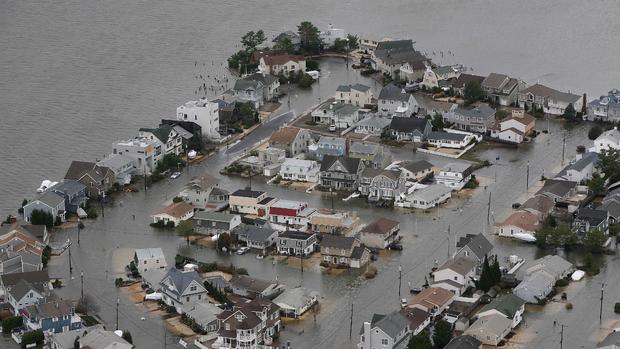Homeowners may face mold problems after Sandy
The damage from Sandy is extensive, but for those returning to their homes, there may be a harder-to-see problem that could pose a potential health risk.
With all the flooding and standing waters caused by the storm, mold may become a problem for many. Mold can cause a stuffy nose, irritated eyes, wheezing, or skin irritation. People allergic to mold may notice they are having a hard time breathing or shortness of breath. Those with asthma, allergies, other breathing conditions or a suppressed immune system, may be more sensitive to mold.
More moisture brings a higher chance that mold can grow. People can tell if mold has infringed on their living space by looking to see if the walls and ceiling are discolored or show signs of mold growth or water damage. Smelling a bad odor such as a musty earthy smell or foul stench may also be a clue there is a mold problem.
The Environmental Protection Agency suggests reducing indoor humidity to 30 to 60 percent to stop further mold growth by using air conditioners and dehumidifiers which could get rid of the moisture. Fans can also help remove moisture once the water has been removed from the area. Clean and dry any damp or wet materials and furnishings within 24 to 48 hours of water exposure to prevent mold growth. Keep windows and doors open to have fresh air circulate, the EPA recommends, and if you are using towels to mop up water, put them in a hot clothes dryer or hang them outside to dry so you don't get sick.
In areas where there might be a continual moisture problems, such as cracks that have been temporarily fixed, try not to lay down carpeting or rugs. Make sure to get those areas fixed as soon as possible, the CDC recommends.
To keep hard surfaces clean, use water and detergent and make sure to dry everything completely. You can also remove mold growth from hard surfaces using a solution of no more than one cup of bleach in one gallon of water, but make sure there is no ammonia in your solution, the CDC advised. Scrub with a hard brush or rough surface sponge.
Porous materials, like ceiling tiles, should be thrown away following water damage from a storm. Not only does this include carpet and carpet padding - especially if it has been soaking for two days or more -- but upholstered furniture, mattresses, wood, food and leather may be at risk. The bad news is that most North American homes have walls made out of sheet rock, a porous material also known as drywall, which will probably need to be discarded and replaced by a professional if the area is greater than three feet by three feet, the Connecticut Department of Public Health said. Bed sheets can be washed in a washing machine and dried in a hot clothes dryer. If you want to file claims on expensive items damaged by the storm, store them outside to avoid health risks.
But most importantly, make sure your building is safe before returning after the stom. Call an electrician to make sure that there are no power cords, wiring, outlets or switches that can electrocute you before entering, the Connecticut Department of Public Health reminded. Look out for natural gas smells or leaking fuel.


